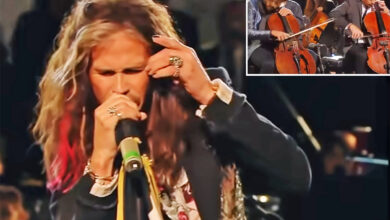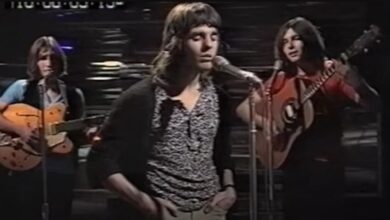The Everly Brothers’ ‘So Sad (To Watch Good Love Go Bad)’ Shines as a Landmark of Emotional Harmony in 1960
In 1960, the Everly Brothers released “So Sad (To Watch Good Love Go Bad),” a bittersweet ballad that would become one of the most defining records of their career. While it didn’t top the charts, its haunting melody and lyrics about the slow unraveling of a relationship connected instantly with fans. Reaching number 7 on the Billboard Hot 100 and cracking the UK top five, it was a quiet powerhouse of that year’s pop and country crossover hits.
Don and Phil Everly, sons of professional musicians, were steeped in the Appalachian harmonies of their Kentucky upbringing. Raised on traditional country and gospel music, the brothers quickly forged a sound that blended rock and roll energy with the deep emotional pull of classic country balladry. By the time “So Sad” was released, the duo had already solidified their place in American music with hits like “Bye Bye Love” and “All I Have to Do Is Dream.”
The genesis of “So Sad” came from Don Everly, who wrote the song during a difficult time in his personal life. Capturing the slow-motion heartbreak of watching love fade, his lyrics told a universal story. It was an understated heartbreak song that avoided melodrama, instead settling into a quiet sorrow that proved far more devastating. The song resonated with anyone who had ever experienced the slow burn of emotional distance.
Recorded in Nashville with a minimal but polished arrangement, the track featured their signature harmonies front and center. The instrumentation was sparse—an acoustic guitar gently driving the rhythm while steel guitar fills added just the right amount of country melancholy. Their voices, close and aching, carried the song’s emotional weight without ever overplaying it.
Critically, the song was received as a mature, restrained turn from the duo. While earlier hits had been youthful and exuberant, “So Sad” showed a deeper emotional palette. It lingered on the charts for weeks and further cemented the Everly Brothers as not just teen idols but serious vocal stylists. Their ability to fuse vulnerability with precision was unmatched.
Culturally, “So Sad” arrived during a transitional time in American music, as country and pop began to find more common ground. The Everly Brothers were a key part of this shift, and this song in particular served as a bridge between the rockabilly of the ’50s and the softer, more introspective tones that would define parts of the ’60s. It reached both country audiences and urban teens alike.
For the Everlys themselves, the song marked a turning point toward more introspective material. It gave them the confidence to pursue a broader emotional range and opened the door to further experimentations in their recordings. Though they would go on to have more hits, “So Sad” remained one of their most personal and enduring.
Its influence extended well beyond their own catalog. The song became a favorite for other artists to interpret. It was covered over the decades by performers from multiple genres, including country, pop, and even folk, each putting their own spin on the aching melody and longing lyrics.
Among the most well-known covers was a duet by Hank Williams Jr. and Lois Johnson in the 1970s, and Emmylou Harris brought her own lonesome sensibility to the song in the early 1980s. Each version remained true to the sorrow at the heart of the original, proving the song’s universal appeal.
The early ’60s were a time of both great professional success and personal strain for the Everlys. Behind the scenes, tensions grew between the brothers, and they faced increasing pressure from the demands of fame. “So Sad” reflected some of this emotional undercurrent, intentionally or not, adding an extra layer of meaning for longtime fans.
As the decades passed, the song remained a staple of their live sets, always drawing a strong emotional response from audiences. It found a second life on greatest hits compilations and in documentaries that chronicled the rise of American harmony groups.
Musically, the song influenced the direction of harmony duos that followed. Groups like Simon & Garfunkel, the Louvin Brothers, and even later acts like The Civil Wars cited the Everly Brothers as an inspiration, and “So Sad” stood as one of their most emotionally honest tracks.
Although many of their other songs may have charted higher or received more airplay, “So Sad” has endured because of its simplicity, sincerity, and its ability to capture a universal human experience with elegance.
Even in retrospectives and posthumous honors, the song is often singled out as a standout in the Everly Brothers’ catalog. It’s the kind of record that doesn’t age. It lingers in the listener’s memory like a quiet goodbye.
Ultimately, “So Sad (To Watch Good Love Go Bad)” isn’t just a song about love lost—it’s a masterclass in restraint, vocal harmony, and emotional storytelling. It defined the duo’s artistry as much as any of their bigger hits and continues to find new generations of listeners moved by its quiet devastation.



